Open Bite: Everything You Need to Know About This Malocclusion
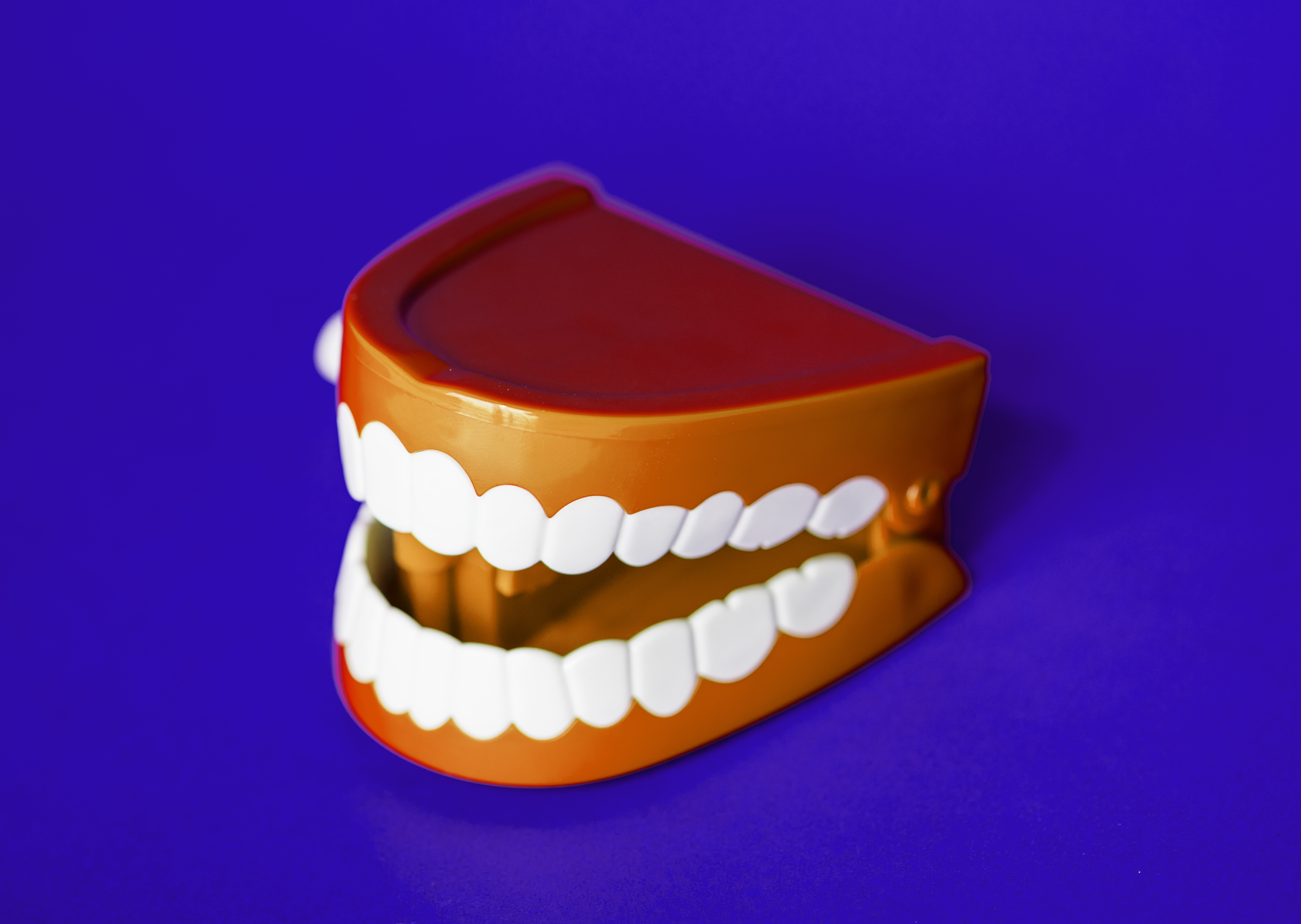 Have you ever wondered why some people have a gap between their upper and lower teeth that prevents them from properly biting down? This dental alignment condition is known as an open bite.
Have you ever wondered why some people have a gap between their upper and lower teeth that prevents them from properly biting down? This dental alignment condition is known as an open bite.
Studies reveal that open bite, on average, affects approximately 16.52% of children and adolescents (5). Initially, it may seem like a minor dental alignment issue. However, if left untreated, it can gradually interfere with the development of the jaws, leading to significant changes in the facial features.
The key to addressing open bite lies in early intervention. By identifying and treating it as soon as possible, we can prevent it from worsening.
In this article:
1. What is an Open Bite?
2. The two main forms of open bite: Dental and Skeletal
3. How to differentiate between dental and skeletal open bites?
4. What Causes an Open Bite?
5. The Most Common Signs of Open Bite:
6. How is open bite treated?
7. What happens if an open bite is left untreated?
What is an Open Bite?
In a healthy bite, the upper front teeth overlap the lower teeth by about 2mm, allowing them to fit together properly when you bite. In the open bite, however, this overlap is missing, creating a space between your upper and lower teeth when you bite down.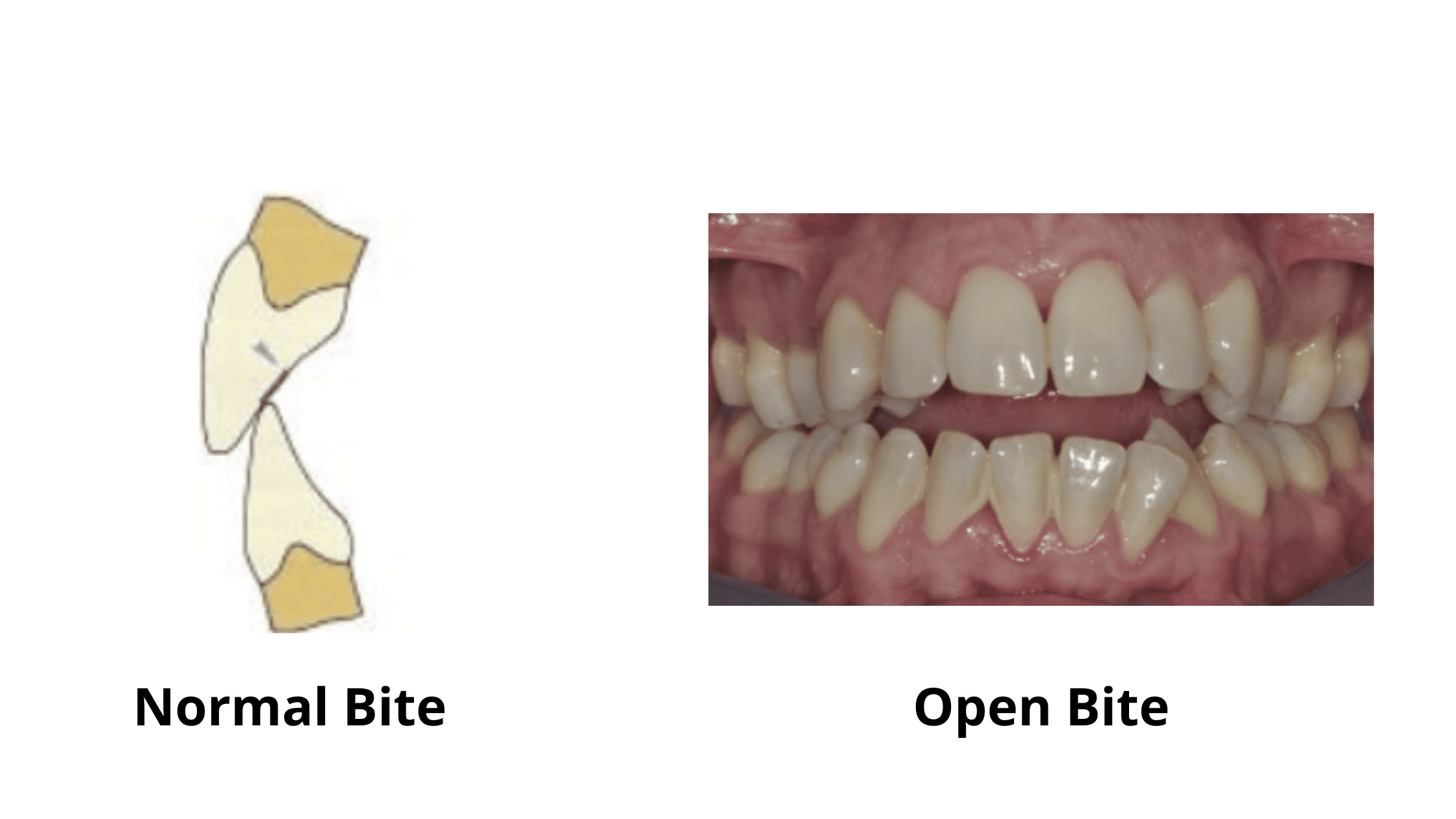
Now, the tricky part about the open bite is that it can worsen over time if left untreated. Let me explain why.
When this malocclusion develops, the tongue will naturally be pushed forward into the gap created. This places a lot of pressure on the front teeth, causing them to shift even more out of their proper position. Moreover, carried away by the tongue's forces, the lower jaw may grow excessively long, giving a longer facial appearance.
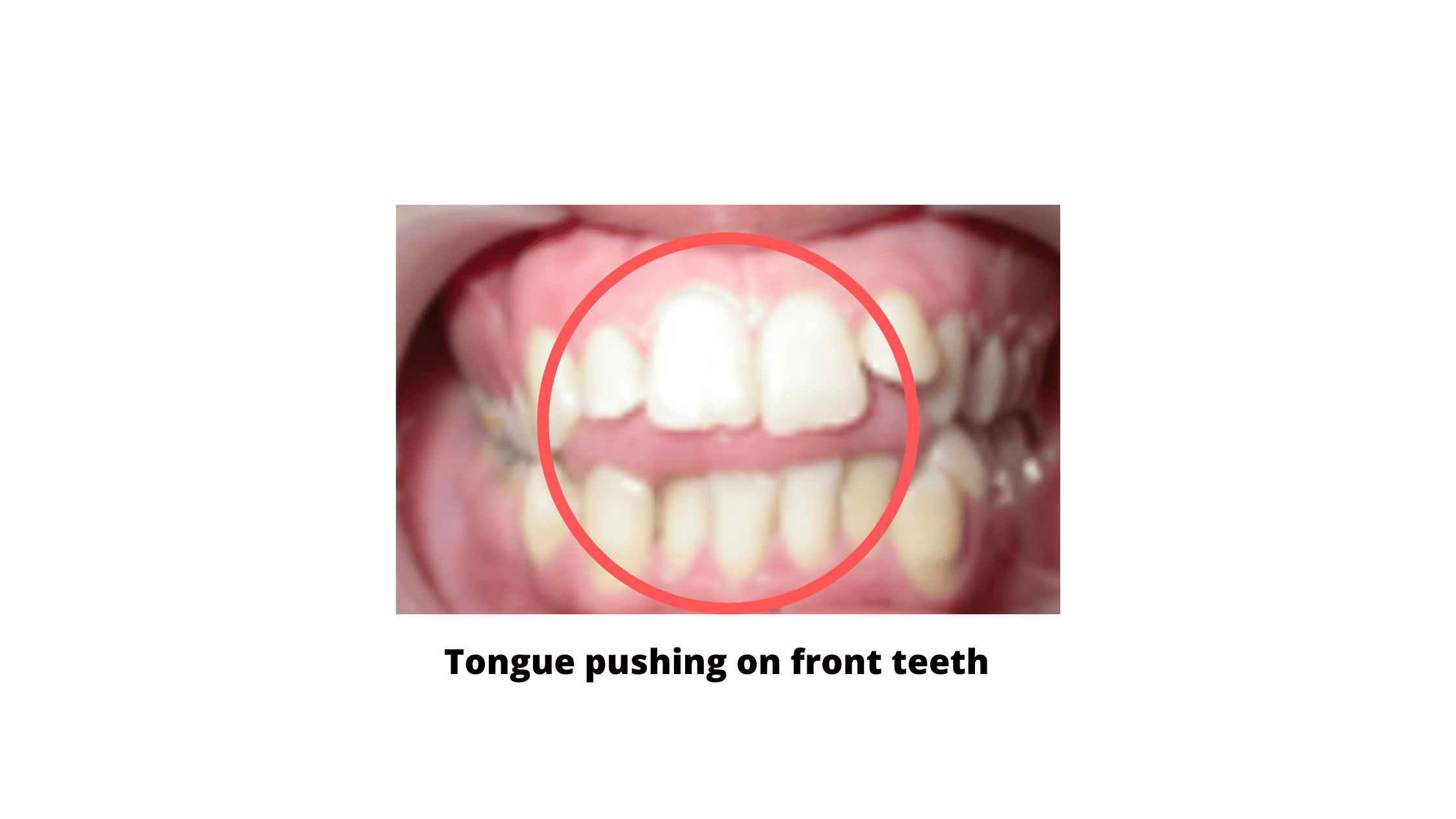
Open bites can occur in different areas of your mouth. The most common is the anterior open bite, which affects the front teeth in your smile zone. However, it can also occur in the back teeth, and in some cases, it may affect both the front and back teeth.
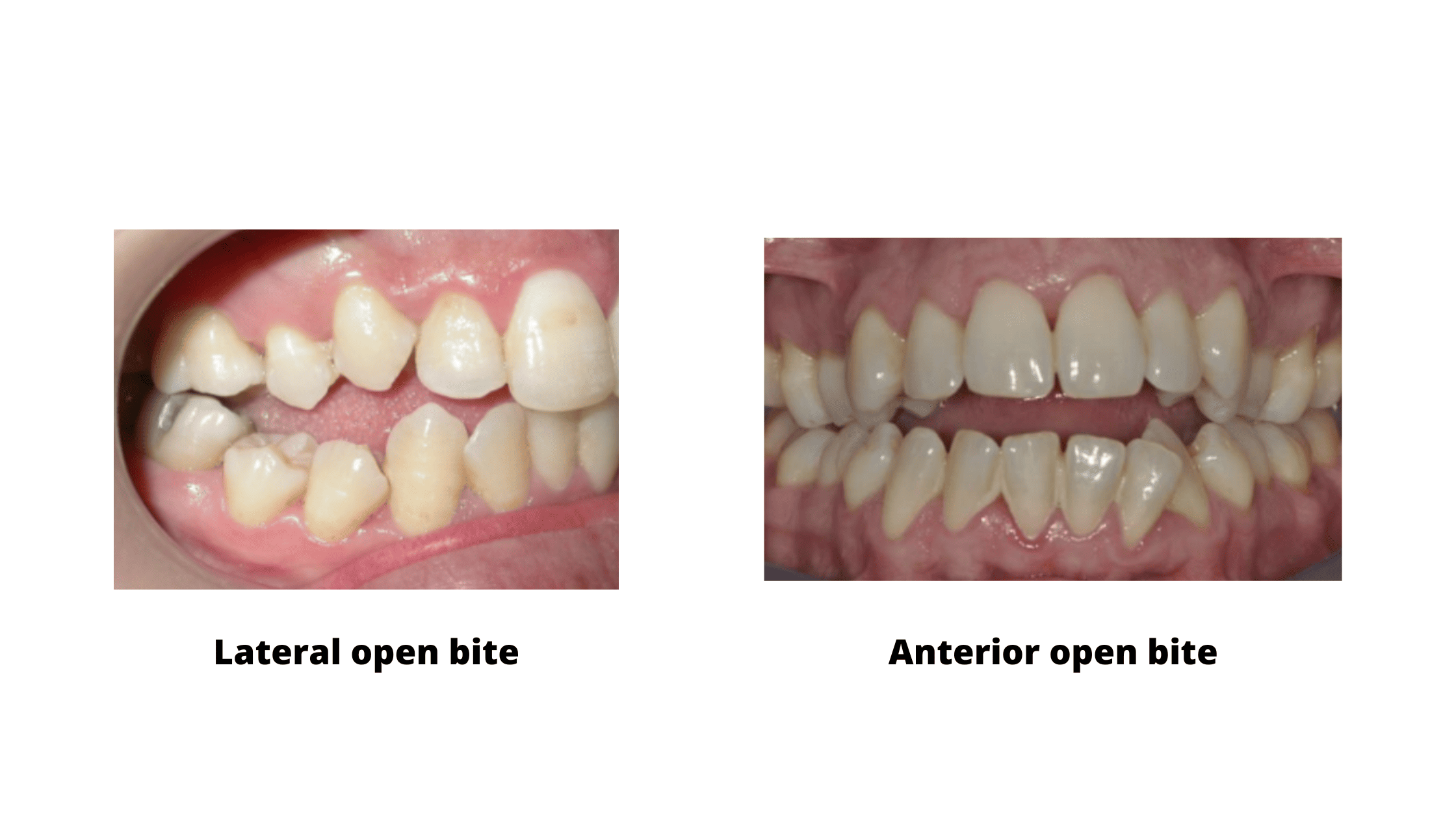
If you think your child has an open bite, there’s one important thing to keep in mind. When children’s front teeth are still coming in, it’s normal to see a small gap between the upper and lower teeth. As the teeth finish erupting, they gradually make contact and the bite usually corrects itself.
So, don’t mistake this natural stage of tooth eruption for an open bite.
The two main forms of open bite: Dental and Skeletal
It's important to understand that there are two main types of open bites: dental and skeletal.Our jaws are composed of two types of bones: the alveolar bone, which supports and holds the teeth, and the basal bone, which makes up the rest of the jaws.
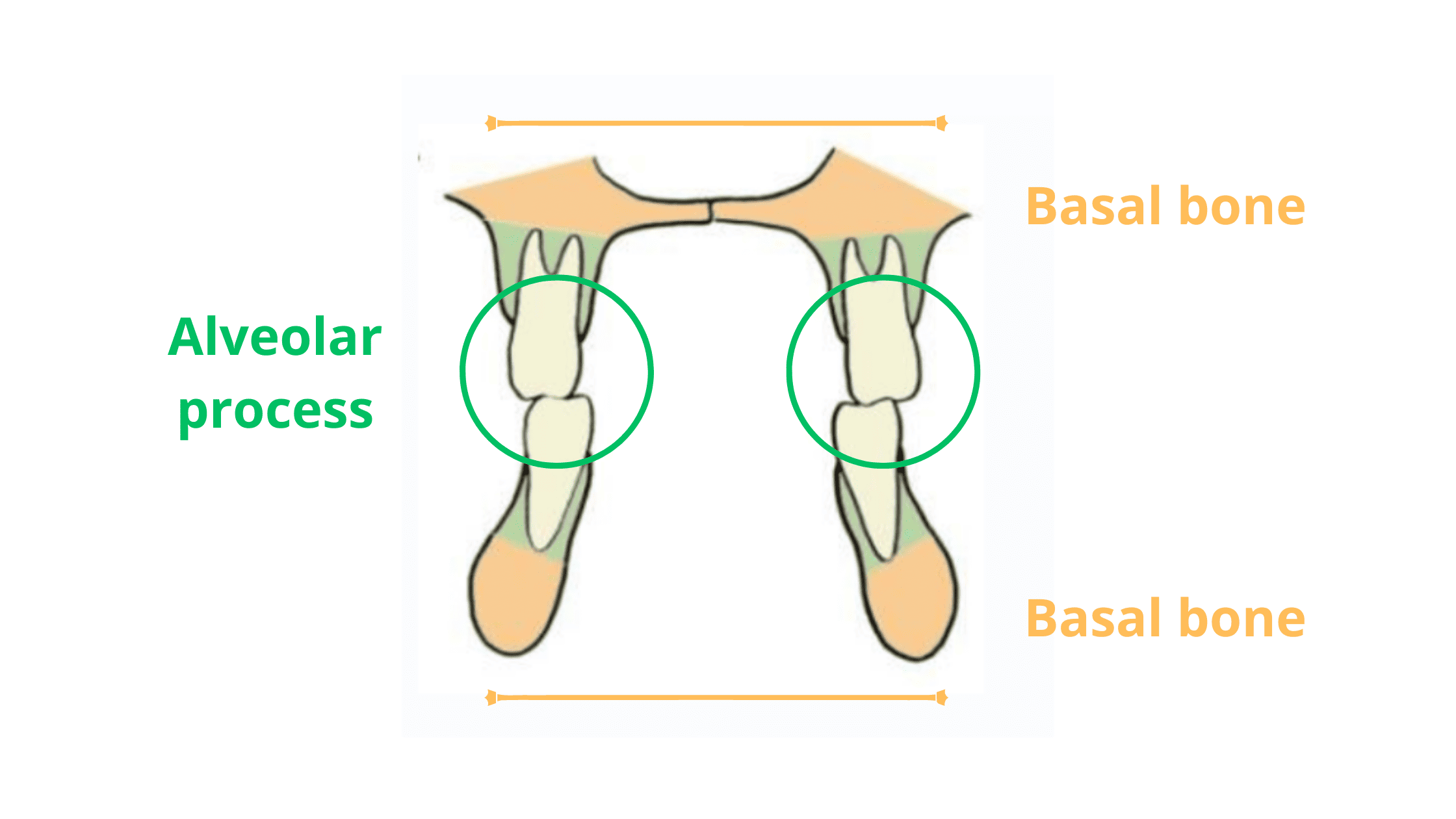
In a dental open bite, the malocclusion involves only the alveolar bone. This means that orthodontic treatments, like braces, can effectively align the teeth and fix the issue.
A skeletal open bite, however, is a more complex condition involving the overall development of the jaws during childhood. This type of open bite is often linked to genetic factors and tends to be more severe, requiring more advanced treatments.
Early intervention in children is simpler and less invasive, as it can take advantage of their natural growth potential to guide and correct jaw development.
In adults, however, growth is already complete. While orthodontic treatments such as braces can still reshape the alveolar bone and reposition the teeth, changing the underlying skeletal structure (basal bone) is only possible through surgical intervention.
How to differentiate between dental and skeletal open bites?
It can be challenging to tell them apart as they are often associated with each other. To determine the nature of your malocclusion, a thorough clinical and radiological examination is needed.In general, if the open bite is severe, involving both the front and back teeth, it is more likely to be skeletal in nature. You may also notice an increased height of the lower face.
On the other hand, if the open bite is mild and only involves the front teeth, it is more likely to be only a dental misalignment issue.
Ultimately, it's important to consult with an orthodontist who can accurately diagnose your specific malocclusion and recommend the most appropriate treatment for you.
What Causes an Open Bite?
When it comes to the causes of an open bite, they can be categorized into two main factors: genetics and functional issues. It's important to note that an open bite is often a combination of multiple factors rather than being solely attributed to one cause.Genetic Factors:

Genetics play a big role in whether or not you develop an open bite.
People with an open bite often have vertically overdeveloped jaws. As the jaws grow taller, the teeth can drift apart, creating a noticeable gap between them.
This vertical growth pattern is often influenced by genetics. It’s common to see the same issue in close family members.
Additionally, genetics determine the size and strength of facial and mouth muscles, including the tongue. An excessively large tongue can exert pressure on the front teeth, leading to an open bite.
Functional Issues:
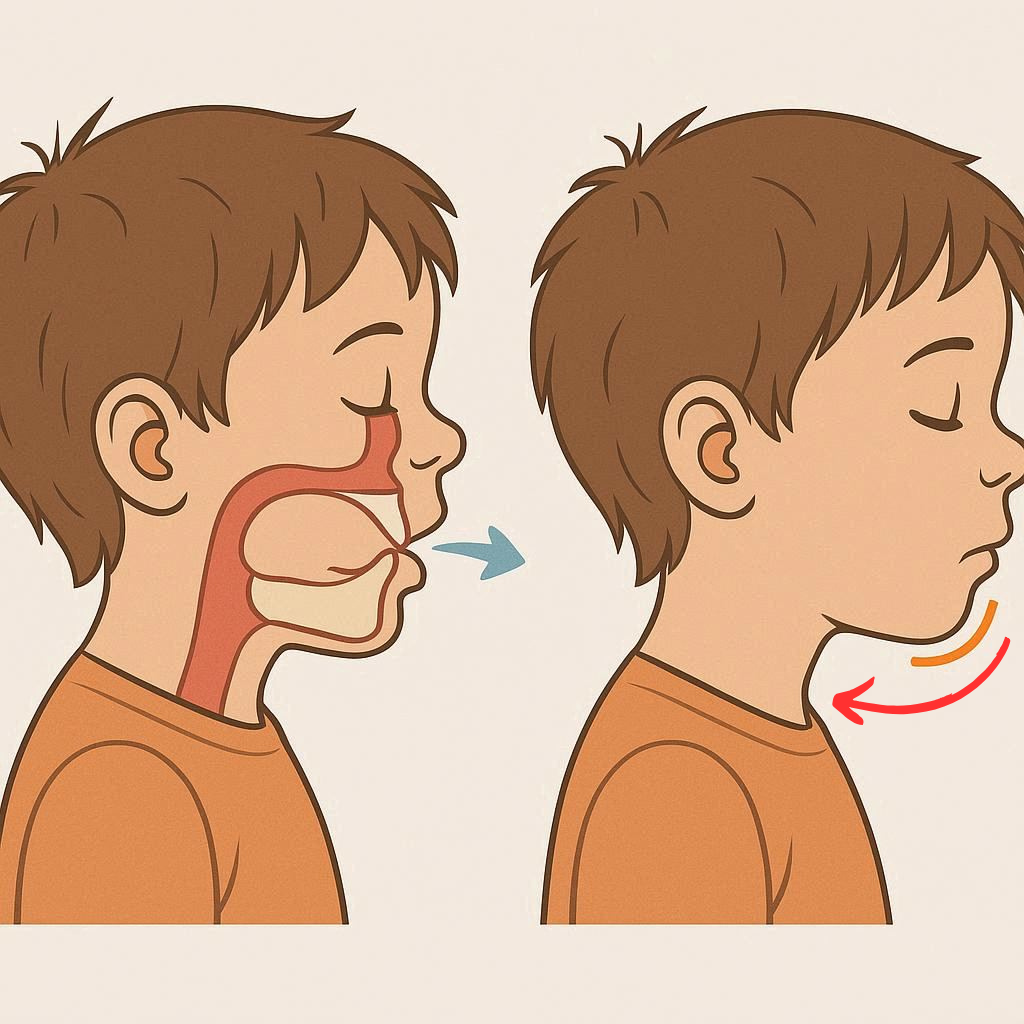
Oral functions include all mouth activities that require the muscles to work, such as chewing, speaking, breathing, and swallowing. These play a crucial role in facial growth and maintaining proper tooth alignment.
Under normal conditions, the muscles in the mouth work in balance, exerting even pressure on the teeth to keep them in a natural position.
However, when this balance is disrupted, as in the case of mouth breathing, certain muscles may work harder than others, resulting in abnormal pressure on the teeth.
Over time, this can lead to changes in tooth position and the development of a malocclusion.
Aside from oral functions, other factors such as thumb-sucking and nail-biting, can also contribute to dental alignment issues.
While these functional issues may start by affecting only tooth position, if they continue, they can eventually influence jaw growth and lead to a skeletal open bite.
Here are the most common functional issues:
1. Mouth Breathing:
When someone consistently breathes through the mouth, the tongue is placed in a low position. In addition to exerting excessive pressure on the front teeth, it causes the lower jaw to grow down and back, contributing to the open bite.
2. Tongue Thrusting:
Tongue thrusting is a swallowing pattern in which the tongue pushes against the front teeth instead of resting against the palate (the roof of the mouth). While it is normal and physiological in newborns, it becomes pathological if it persists after 4 years old.
This repeated pressure from the tongue can create a force that pushes the front teeth forward and contributes to an open bite.
3. Thumb Sucking:
This is a common habit among infants and young children. It's also a vital physiological reflex in newborns and can persist for up to 5 years. However, beyond this age, prolonged thumb sucking can exert pressure on the developing teeth and jaws, causing them to shift out of their proper alignment.
The Most Common Signs of Open Bite:
When it comes to identifying an open bite, there are several common signs to look out for. The most obvious sign is the inability of the upper and lower teeth to touch when biting down. However, depending on the underlying cause, there may be additional associated symptoms, including:- Increased Lower Facial Height: In cases where the open bite is skeletal in nature, there may be an increased distance between the point below the nose and the chin. This can give the face an elongated appearance.
- Difficulty Closing the Lips: Individuals with an open bite often experience difficulty fully closing their lips. They may need to exert more effort and muscle contraction to do so.
- Long Face Syndrome: Some individuals with an open bite may exhibit a long, narrow face and a receding chin. This condition is often associated with a narrow upper jaw and the downward and backward growth of the lower jaw. It is commonly observed in mouth breathers.
- Other Signs of Mouth Breathing: Mouth breathing is often associated with open bite conditions. In addition to the physical appearance of the open bite, individuals who breathe through their mouths may display other signs, such as dark circles under the eyes, a pinched nose, an open mouth posture, and an abnormal head position with the head tilted forward.
How is open bite treated?
Treating an open bite depends on various factors such as severity, age, and underlying causes. Generally, there are three main approaches to treatment:- Removing bad habits and triggering factors
- Orthodontic treatment
- Jaw surgery
1. Treatment in children:
The optimal time to address an open bite is during childhood when the child is still growing. Taking advantage of the growth potential makes treatment easier and more effective. The treatment approaches for children with an open bite include:
- Removing obstacles to oral functions: As mentioned earlier, oral functions such as breathing and swallowing play a crucial role in facial growth and teeth alignment. By removing obstacles that hinder proper oral functions, we can promote normal facial growth and prevent malocclusions. This may include addressing allergies, clearing the upper airways, and performing a lingual frenectomy to enhance tongue movement and posture.
- Myofunctional therapy: Myofunctional therapy is a treatment approach that aims to train the muscles of the face and mouth to function correctly. Through voluntary rehabilitation exercises, the child learns to replace distorted habits with more natural and physiological ones. This therapy can address various issues, such as eliminating thumb-sucking, restoring nasal breathing, and correcting the swallowing pattern associated with tongue thrusting. Following the therapy, the brain integrates new reflexes that promote optimal dental and facial development.
- Passive rehabilitation: In young children who cannot actively participate in myofunctional therapy, passive rehabilitation methods are employed. These involve using orthodontic devices to help the child get rid of his bad habit without participating in voluntary exercises. These appliances can include tongue cribs, tongue spurs, or orthodontic trainers.
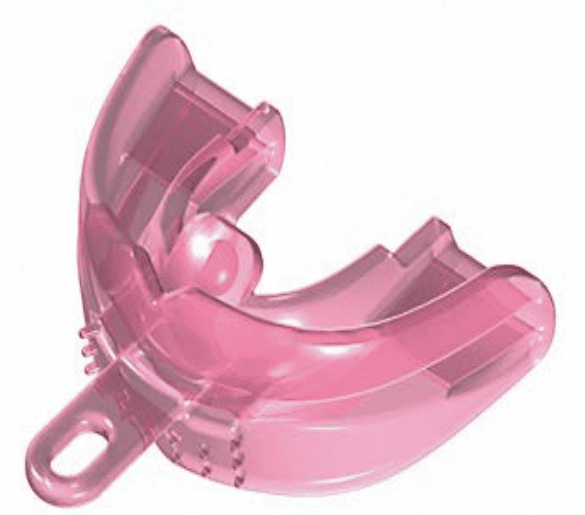
Passive orthodontic device for children
By addressing obstacles and bad habits, the child's face and jaws can resume normal growth, potentially resolving the open bite (especially when baby teeth are still present) (1). If the open bite persists afterward, orthodontic treatment, such as braces, may be used to reposition the teeth correctly.
2. Treatment in adults:
In adults, the permanent teeth are fully developed, and growth has ceased, making self-correction of the open bite impossible. Treatment approaches for adult open bite include:
- Removing obstacles and bad habits: In adults, it is crucial to rehabilitate oral functions as well. This involves restoring muscular balance and eliminating habits that contribute to the open bite. This ensures stable treatment results and reduces the risk of the issue returning later. The rehabilitation of oral functions in adults is achieved primarily through voluntary exercises (without the need for passive orthodontic devices).
- Orthodontic treatment: Orthodontic treatment for adult open bite can be performed with or without extractions, depending on the available space in the jaw. If space is limited, extractions may be necessary. Braces or aligners such as Invisalign are then utilized to align the teeth and bring them into their correct position.
- Jaw surgery: Jaw surgery, also known as orthognathic surgery, is considered in extreme cases or when the open bite is severe and skeletal. It involves repositioning one or both jaws to reduce the excessive facial height and close the open bite.
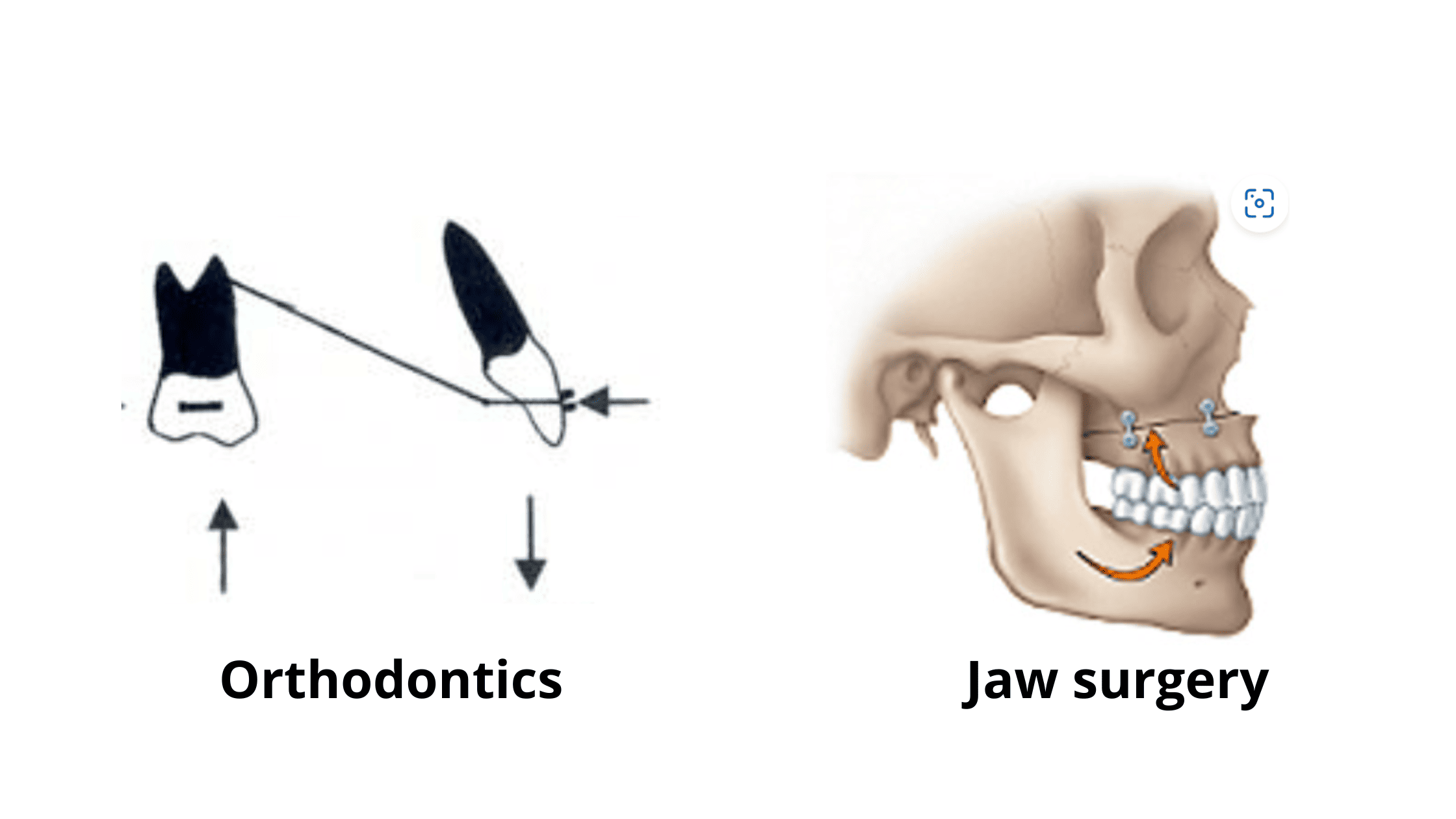
What happens if an open bite is left untreated?
Leaving an open bite untreated can have significant consequences for both your appearance and oral function. Here are some potential issues that may arise:- Aesthetic concerns: An open bite affects your smile and facial features, potentially leading to self-consciousness and decreased confidence.
- Impaired daily functions: Difficulties in breathing, eating, and swallowing can arise from an untreated open bite, affecting your overall quality of life.
- Progressive deterioration: An open bite is a self-sustaining condition that tends to worsen over time if not addressed. It can impact jaw growth and facial development, further exacerbating the malocclusion.
- Joint problems: Misaligned teeth in an open bite can contribute to temporomandibular joint (TMJ) issues. You may experience pain, discomfort, and limited jaw movement when chewing or opening your mouth.
- Oral health risks: Having an open bite increases the risk of oral health problems such as cavities, gum disease, and tooth wear. The misalignment can make proper oral hygiene more challenging, leading to potential dental complications.
- Open bite – dental and skeletal. Differential diagnosis, prophylaxis and treatment. Retention problem
- Open bite malocclusion: An overview (heighpubs.org)
- The genetic basis of facial skeletal characteristics and its relation with orthodontics - PMC (nih.gov)
- Association between oral habits, mouth breathing and malocclusion - PMC (nih.gov)
- Prevalence of anterior open bite in children and adolescents: a systematic review and meta-analysis - PubMed (nih.gov)